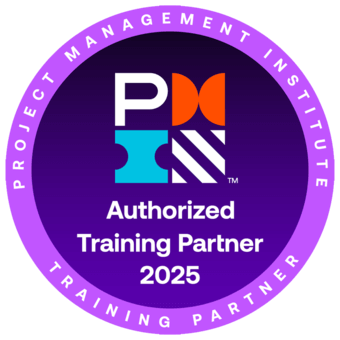Scrum Master Training Online Course | GoSkills
Scrum for Scrum Masters
Skills you’ll gain
The Scrum Master is a highly sought after position in many industries including software development, marketing, education and design. Scrum Masters are valued leaders responsible for driving team performance by removing obstacles, facilitating meetings and improving communication.
Whether you are a team member looking to be promoted or a supervisor wanting to acquire a new skillset, this Scrum Master training online course will help you learn the tools of the trade to become a highly respected Scrum Master, and advance your Agile project management career.
Highlights:
- 37 lessons.
- Understand the roles of Scrum Master, Product Owner, and Scrum Team.
- Know the steps in planning and executing an Agile/Scrum project.
- Understand the organizational impact of using Agile/Scrum for project management.
- Recognize the differences between Sequential, Concurrent, and Agile project management and know when to use each approach.
- Understand how to use the Agile/Scrum tools of Story Cards, Product Backlog, Scrum Boards,and Burn-down Charts.
- Refers to the Project Management Institute's Agile Certified Practitioner Handbook.
- Earn 18.5 contact hours or PDUs toward your project management education for certification with PMI.
Once enrolled, our friendly support team and tutors are here to help with any course related inquiries.
Syllabus
Download syllabus-
1
Agile/Scrum Precepts The Agile/Scrum is a project management methodology that is in sharp contrast to traditional project management. That is because it starts with a different set of underlying precepts. 5m
-
2
Sprint – Scrum Process The Agile/Scrum methodology is a structured project management methodology. It follows a prescribed process that includes Sprints and Scrums. 4m
-
3
Sprint – Scrum Meetings Within the Agile/Scrum project management methodology there are a set of meetings that are used to plan and manage the process. Rather than analytical tools, this methodology relies heavily on the use of specific targeted meetings. 5m
-
4
Story Cards Story Cards, also known as Product Backlog Items (PBIs) are the technique used for documenting project scope, quality requirements, estimates and priority of the deliverables in an Agile/Scrum project. 3m
-
5
Product Backlog The product backlog is the prioritized list of project deliverables. 4m
-
6
Sprint – Scrum Team The Scrum Team performs the project work conducted during a Sprint on an Agile/Scrum project. 6m
-
7
Scrum Master The Scrum Master is the individual who is responsible for facilitating the Agile/Scrum Sprint process. 5m
-
8
Product Owner The Product Owner role is the person on an Agile/Scrum project who is responsible for establishing and explaining the desired project scope. 4m
-
9
Sprint Controls Sprint Controls are the project management tools that are used by the Scrum Master and Scrum Team to assess performance. 5m
-
1
Step 0: Vision A clear goal or vision is essential to project success. That is as true with Agile/Scrum as with traditional projects. 4m
-
2
Step 1: Preparing the Product Backlog Preparing the Product Backlog is the first step in the Agile/Scrum Sprint methodology. It includes creating and prioritizing all the Story Cards. 4m
-
3
Step 2: Assign Scrum Team To do the work of the Sprint, a Scrum Team must be assigned. 4m
-
4
Step 3: Sprint Planning The Sprint is initiated with a Sprint Planning Session that organizes the work, estimates the effort, and initializes the Scrum Board and Burn Down Chart. 5m
-
5
Step 4: Sprint Execution Sprint execution is the actual work of the Scrum team during the Sprint to accomplish the tasks needed to complete each Story in the Sprint Backlog. 4m
-
6
Step 5: Sprint Demonstration The Sprint Demonstration is the formal meeting where the Scrum Team demonstrates to the Product Owner the performance of each deliverable that was created during the Sprint. 4m
-
7
Step 7: Sprint Retrospective The Sprint Retrospective is a lessons learned meeting with a focus of identifying opportunities to improve the performance and management of the next Sprint. 4m
-
1
Requirements Management Project requirements management in an Agile/Scrum project is conducted using Story Cards and Backlogs. The list of requirements is variable and is not finalized until the end of the project. 5m
-
2
Stakeholder Engagement Stakeholder Engagement is the effort by the Product Owner to communicate with all affected stakeholders in order to identify potential requirements and provide project status. 4m
-
3
Writing Story Cards The Product Owner writes the story cards, which document the requested scope of an Agile/Scrum project. 6m
-
4
Prioritizing the Backlog The Product Owner must regularly prioritize the Story Cards that make up the Product Backlog and at the beginning of a Sprint he or she must prioritize the Story Cards selected for the Sprint Backlog. 6m
-
1
Self-Organizing Teams Scrum Teams do not rely on assigned project management roles, rather the team organizes and manages itself. 5m
-
2
Sprint Planning – Part 1 The first portion of the Sprint Planning meeting consists of selecting the Sprint Backlog and clarifying Stories. 6m
-
3
Sprint Planning – Part 2 The second part of the Sprint Planning meeting is the time when detailed planning takes place by the Scrum Team and the Sprint is actually initialized. 5m
-
4
Scrum Meetings During a Sprint, the Scrum Team meets daily at a Scrum Meeting to provide status on progress. 6m
-
5
Removing Roadblocks Roadblocks are impediments that prevent the Scrum Team from completing Stories and tasks. The Scrum Master is charged with removing or creating a workaround for the Roadblocks. 6m
-
6
Sprint Demonstration Planning Sprint Demonstration Planning ensures that the Sprint Demo meeting appropriately reflects the work accomplished by the Scrum Team. 5m
-
1
Role of Management Agile/Scrum is an organizational approach to project management and requires buy-in from senior management to be effective. 5m
-
2
Organizational Alignment Organizational alignment is the activity needed to ensure the systems and processes within the organization support the Agile/Scrum methodology and do not undermine it. 6m
-
3
Strategic Alignment Agile/Scrum projects are often used to implement both product line strategy and operational strategy. They can be used with customer projects – but there are challenges with that approach. 4m
-
4
Project Selection Senior management also has the role of selecting projects that are suitable for the Agile/Scrum methodology. 5m
-
5
Agile/Scrum Challenges When implementing Agile/Scrum, there are several process and project challenges that most organizations encounter and must be addressed. 6m
-
6
Agile/Scrum Failure Points There are common reasons for why an Agile/Scrum implementation initiative will fail. Awareness of these failure points reduces the likelihood that an organization will fall prey to one of these. 6m
Certificate
Certificate of Completion
Awarded upon successful completion of the course.

Instructor
Ray Sheen
Ray is a certified Project Management Professional (PMP) with the Project Management Institute, a certified Scrum Master with Scrum Alliance, and certified Lean Six Sigma Black Belt with IASSC. He is a member of the Project Management Institute and the Product Development Management Association.
He is president and founder of Product & Process Innovation, Inc. and is a veteran business leader with over 25 years of executive, project management, and engineering management experience. Ray has worked in several industries including aerospace, electrical distribution and utilities, biotechnology, appliances, electronics, machining, medical devices, pharmaceutical, automotive, and financial services. He has held executive management positions in a Fortune 500 company and has been involved in entrepreneurial startup organizations.

Ray Sheen
Project Management Instructor & Author
Accreditations
Link to awards The PMI ATP seal, PMI, PMP, CAPM and PMBOK are registered marks of the Project Management Institute, Inc.How GoSkills helped Chris
I got the promotion largely because of the skills I could develop, thanks to the GoSkills courses I took. I set aside at least 30 minutes daily to invest in myself and my professional growth. Seeing how much this has helped me become a more efficient employee is a big motivation.



